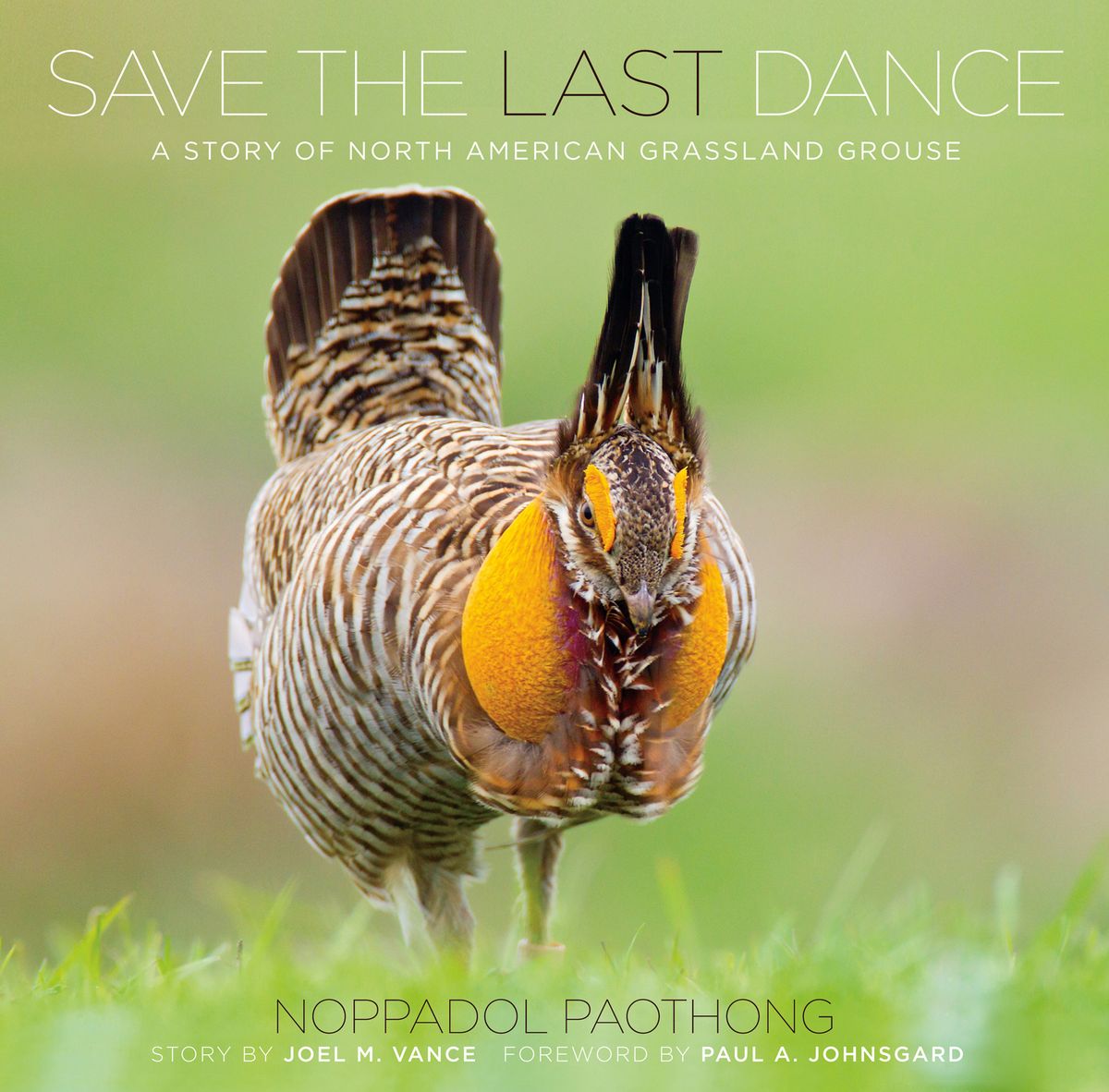North Idaho-trained photographer focused on saving endangered species

In 1993, an immigrant fresh from Thailand enrolled at North Idaho College and studied two courses that changed his life.
“First I had to learn English as a second language,” Noppadol Paothong said last week, “Then I learned wildlife photography could be a career.”
Today he uses his arsenal of lenses and talent to raise awareness for vanishing American wildlife and habitats. Some critics say Paothong recently published perhaps the single most impressive collection of photos documenting North American prairie grouse.
Initially Paothong was interested in graphic design, but changed gears while taking a wildlife photography course taught by Tim Christie. The Coeur d’Alene communications instructor became a role model. The immigrant was fascinated that Christie could combine his camera skills and love for hunting, fishing and nature to publish images in the top outdoor magazines in the country.
Paothong was still a student at NIC in 1997 when he began winning photography awards and sold his first photo. A Thai magazine bought an image of a bald eagle he snapped during 40 days of bitter-cold visits to Lake Coeur d’Alene with marginal camera gear during the annual winter eagle gathering.
He finished a journalism program and polished his skills as a newspaper photographer until 2006, when he landed his dream job with the Missouri Department of Conservation, celebrated for its award-winning publications.
At age 39, Paothong recently anchored his spot on the top tier of wildlife photographers in terms of skills, tenacity and purpose with the publication of “Save the Last Dance: A Story of North American Grassland Grouse.”
With text by Joel M. Vance, the stunning photography in the 204-page book captures the life cycles and struggles of all seven once-bountiful North American grassland grouse species, including the sharptail and greater sage grouse found in Idaho, Montana, Oregon and Washington as well as one species that’s already faded into extinction.
Photos focus on their fragile habitat as well as on the spellbinding spring displays as males gather on breeding grounds to strut and dance their way to social dominance for mating.
Paothong persevered 11 years to capture the full range of images, logging 80,000 miles and visiting 14 states.
Good outdoor photographers would sleep on nails to claim Paothong’s grouse project culls.
“It all started during two years of photographing prairie chickens where I live,” he said in a telephone interview from his home in Missouri. “I was getting up and heading to the field at 4 a.m. every morning in spring before I went to work. My wife said I was putting so much time into it, I should do a book.
“At first I thought I could do a book on all the grassland grouse species in five years during breaks from my regular job,” he said.
But challenges added up: “All of the prairie grouse display and breed during the same general spring period. I could only be one place at a time, and some of these places are remote.”
Weather, equipment breakdowns, predators and other issues could abruptly end a day he’d researched and planned for weeks.
“Some birds are harder to photograph than others, and I was trying to document all facets of their life to explain why it’s important to save them,” he said
“That’s why it took 11 years.”
Photography is a natural progression from Paothong’s love for art. He said he tries to view through a lens the way Monet or other Impressionists might look at a canvas.
“Wildlife photography was something I was just happy to do,” he said. “The idea of making it a career was glamorous. But the job is a lot of work.”
And the hours are horrible. “You can be up all night shivering in a blind for a short burst of shooting at sunrise,” he said.
Working in the same agency with wildlife biologists in Missouri is a huge asset for a wildlife photographer who researches the background and searches for the rhythms of a species before trying to capture its image with a camera.
“I hope this book will be a window for people to glimpse the life and beauty of these extraordinary species – the birds that I have come to care so much about,” he said.
One of the lek-forming grouse, the heath hen of New England, has been extinct since the 1930s.
With fewer than 60 birds left at the refuge and just eight on the private land, the Attwater’s prairie chicken in Texas is one of North America’s most endangered species.
The Gunnison sage grouse of Colorado is rare and hard to observe, much less photograph.
And nearly all the other prairie grouse, including the greater and lesser prairie chickens, are in decline. Ranchers and biologists in the West are working together to stave off federal Endangered Species protections on sage grouse and sharptails that could inflict restrictions on private landowners.
Paothong and his images from “Save the Last Dance” recently were featured in a five-page spread in National Wildlife Magazine’s March issue. The Washington Post is publishing his work, National Geographic is looking into his story and a World Wildlife Fund crew filmed him in action with prairie grouse.
Topping it all off, on April 12, he became a U.S. citizen.